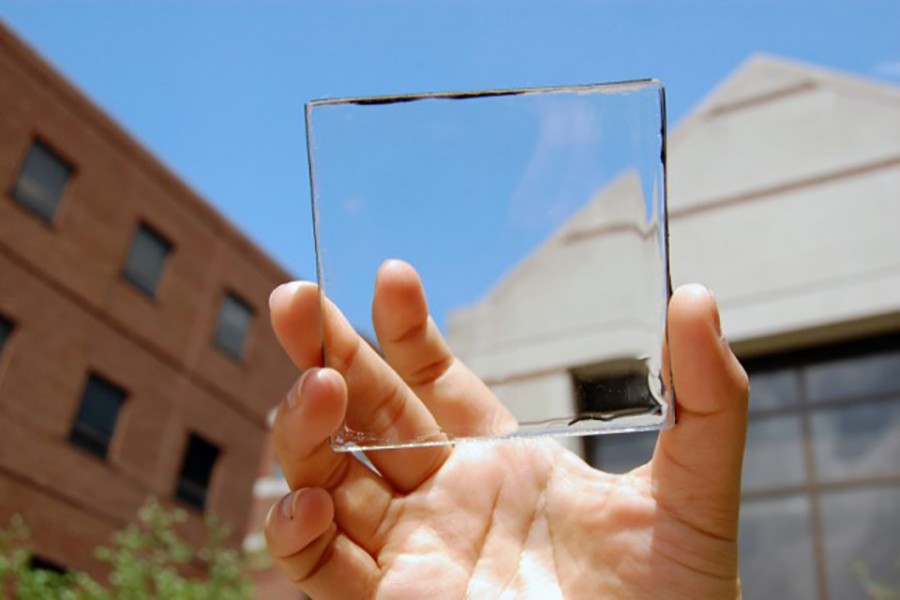Chinese scientists have said they have come up with a more efficient luminescent solar concentrator (LSC), which can be made into "solar windows" that turn sunlight into electricity.
Researchers at the Dalian Institute of Chemical Physics said they designed a "quantum-cutting" approach to double the efficiency of LSC devices. Their research was published in the December issue of Nano Letters.
LSC, a less expensive photovoltaic technology, functions by collecting sunlight on a broad area, converting it into luminescence and directing it to solar cells at a narrow edge. The solar concentrator's semi-transparent appearance also allows for the creation of "solar windows" that can turn energy-consuming buildings into power-generation units.
Wu Kaifeng, who leads the research team, said that the quantum cutting approach held bright prospects for the application of solar windows.
"The idea of using windows to produce electric power is fascinating -- Just imagine a world in which all buildings are equipped with solar windows to power themselves. LSCs are exactly the type of solar windows to make such imagination come true," Wu said.
"So far, this technology has not been commercialised because the efficiency of LSCs is still too low," the researcher said.
Traditional LSC designs are plagued by a low internal optical efficiency, usually below 60 per cent, caused by a low emission rate of luminophores and a significant loss of energy to self-absorption, according to Wu.
Wu's team used ytterbium-doped nanocrystals to make the new LSC based on the concept of quantum cutting, or cutting one photon into two while conserving the total energy. The new materials emit two near-infrared photons after absorbing one blue photon, achieving an internal optical efficiency of about 120 per cent, reports Xinhua.
LSC is believed to be a revolutionary new front of solar power technologies. Solar concentrators boast lower costs compared with silicon-based solar panels, which have reached up to the roof of our buildings, while opening up new windows of opportunity for better using building facades.


